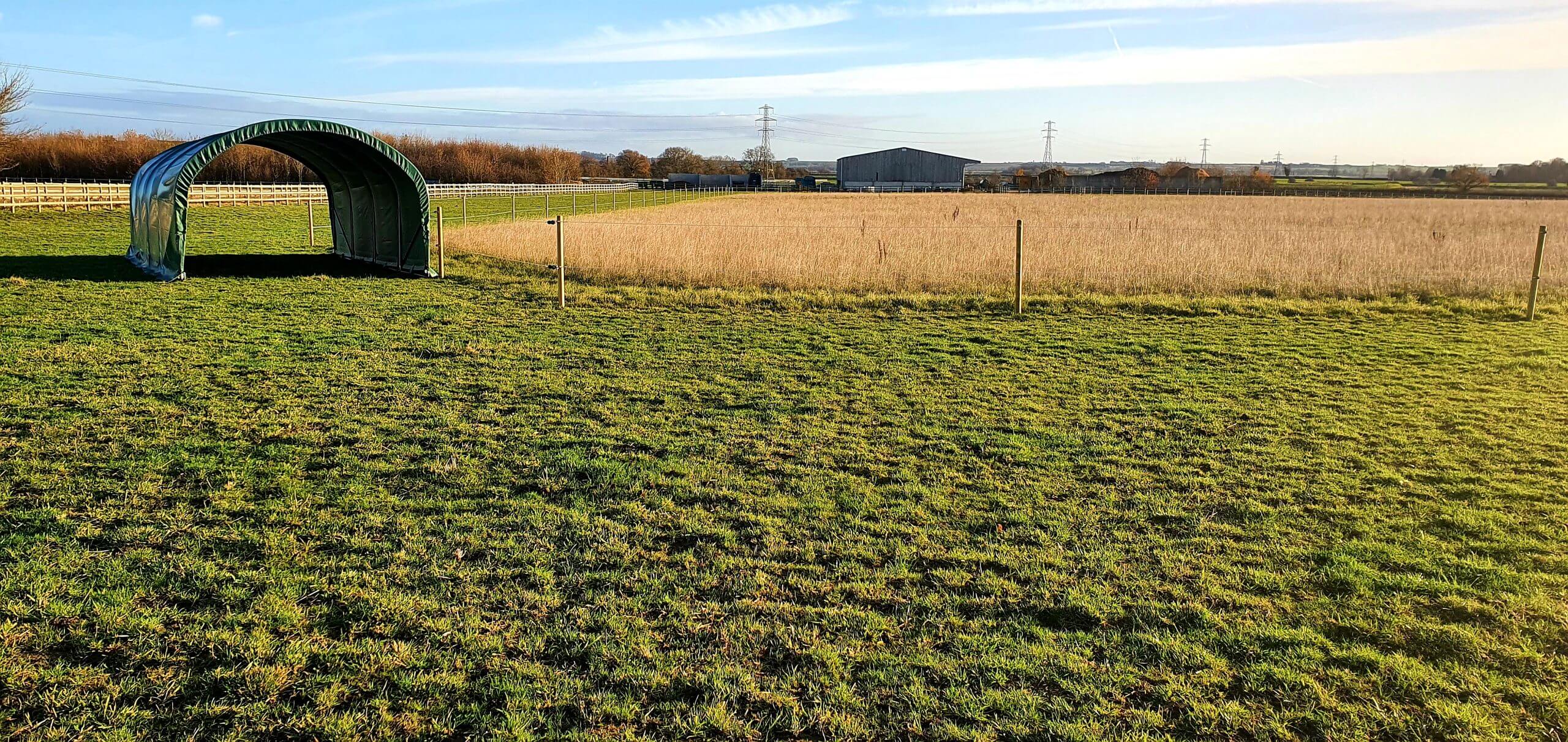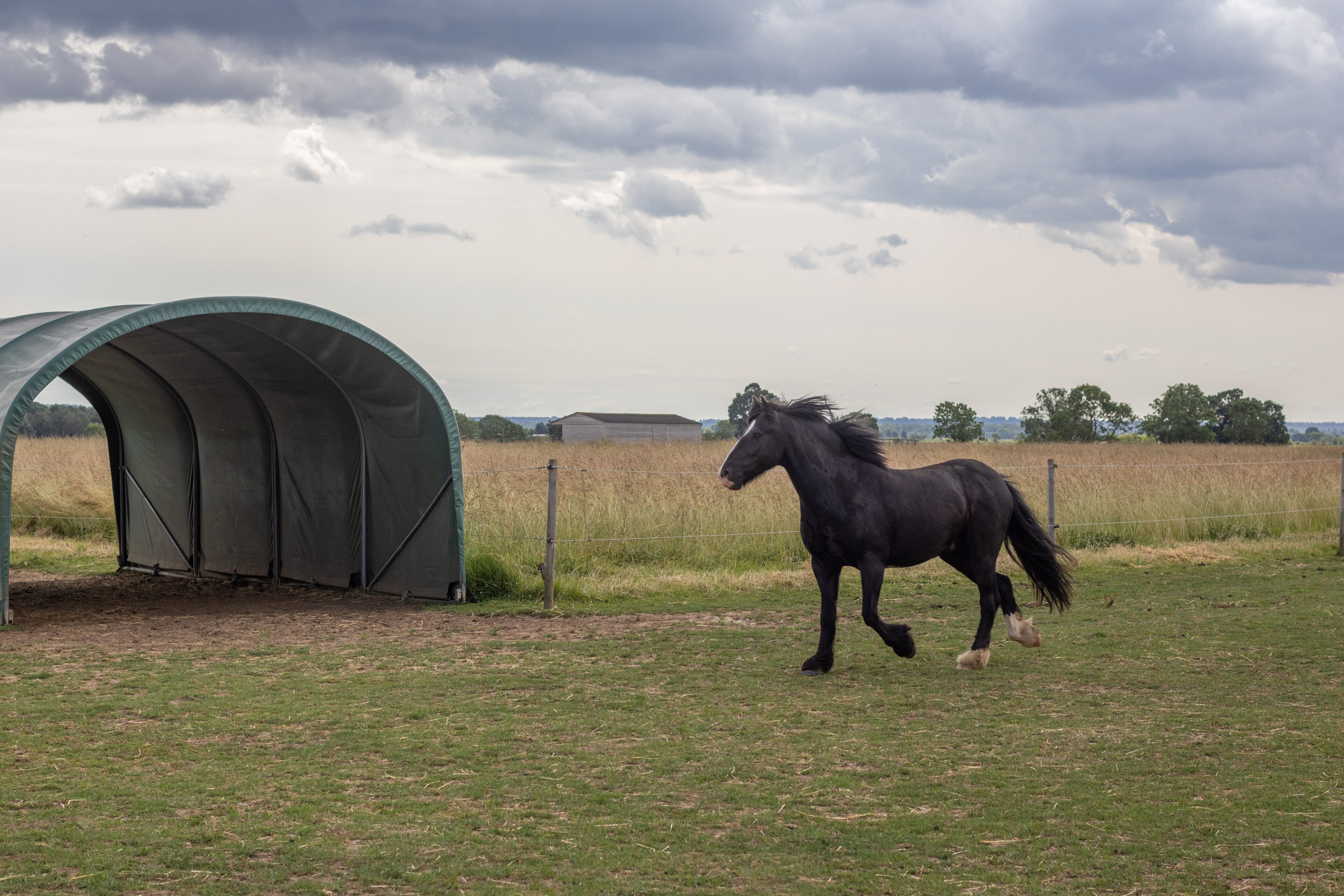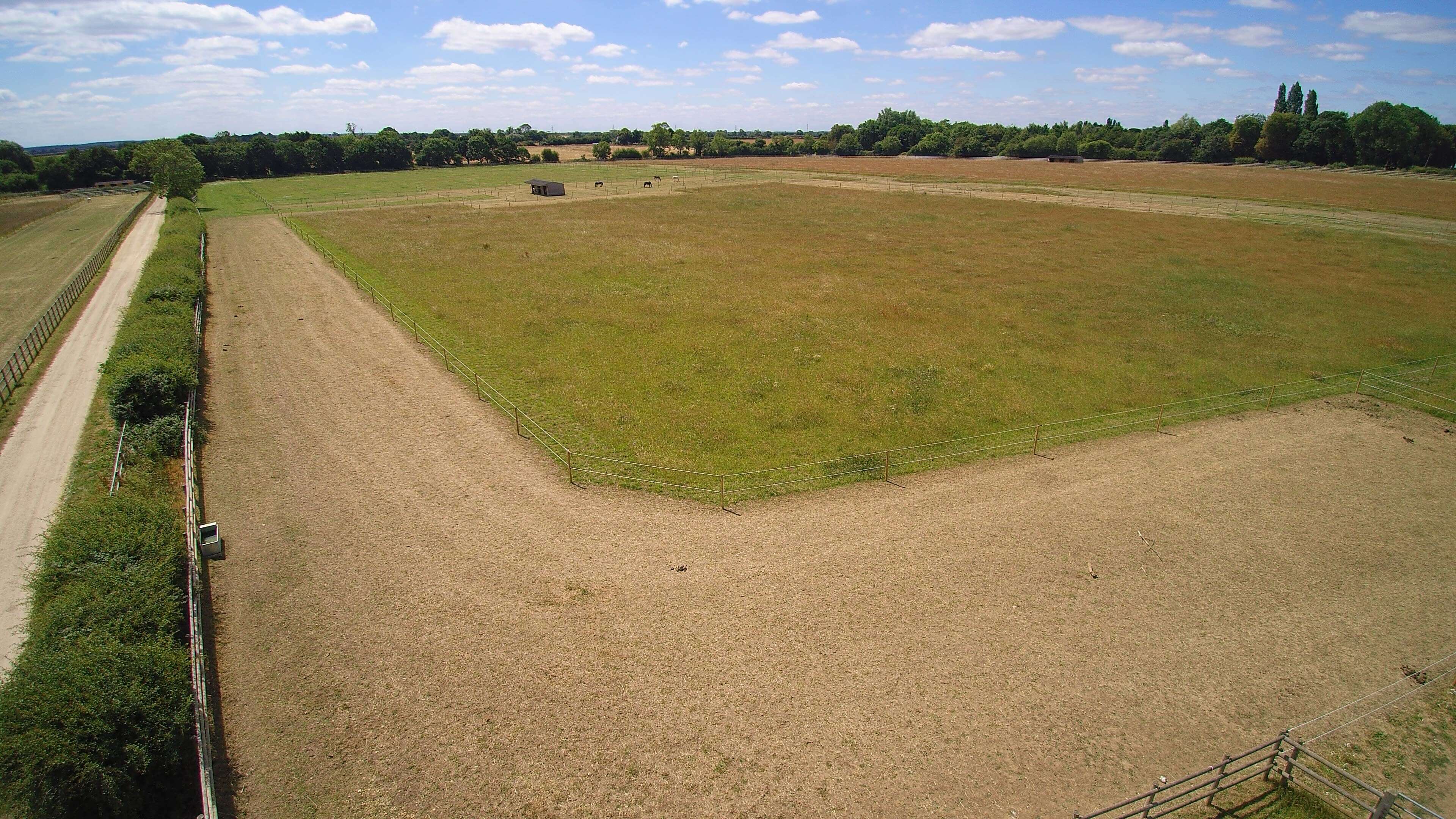- Home
- What We Do
- Equine Advice
- Grazing Track Systems
Grazing Track Systems
A grazing track system is a method of keeping either an individual or a herd of equines at grass in a way that mimics their natural behaviour. Within a traditional paddock or field an internal fence is installed to create a ‘track’ around the perimeter. This could be electric fencing with wooden posts on the corners for stability. Alternatively, an existing track could also be utilised.
Track systems can be used to promote weight loss, used as a management tool for equine conditions or to provide a more stimulating environment. In the wild horses would roam and graze for around 16-18 hours per day, they would express behaviours like grazing, playing, foraging, socialising, resting and interacting with others within the herd.
During the track system grazing period (spring until early autumn), Bransby Horses rests the middle of the track for winter standing hay, this utilises all of the grazing available and provides forage needed during the winter months as the grass growth slows down. Standing hay could also be used for a crop of hay or as grazing for equines with different needs.
Standing hay is long fibrous grass that has been left over the summer months to grow, it can then be grazed during the winter months as low sugar forage, saving money and utilsing all of the paddock.
When to consider a grazing track system
If you are considering a change in the way you manage your horses, maybe you are wanting them to experience a more natural environment, or you have been advised to manage their weight more effectively, a track system may work for you.
If your equine fits into any of the below criteria, it could be worth implementing a track system.
- A good doer
- Puts on weight very easily and struggles to keep a correct body condition score
- Recently had laminitis and is now at risk of reoccuring bouts
- Arthritic and needs gentle exercise and movement with the freedom of choice
- Has muscle myopathy and requires gentle exercise to alleviate muscle cramping
You could choose to bring them in a stable for much of the day to reduce grass intake or apply a grazing muzzle or strip grazing but this reduces the amount of space for the equine and when the fence line is moved, they can tend to gorge themselves on the new grass available.
The benefits of track systems
- Increases movement and activity of walking to find forage, water, shelter, and enrichments.
- Reduces grass intake without limiting the equine to a small space.
- Aids weight loss with the support of movement and providing mental and physical stimulation.
- Mimics the equines natural environment by expressing natural behaviors such as foraging and browsing. Creates a stimulating and enriched environment with choice.
Creating a track of grazing around the perimeter of your existing paddock, then spacing out the water, shelter, enrichment and supplemented forage is beneficial for the majority of equines and not only restricts the amount of grass intake but promotes movement to support your management of reducing an equines weight or maintaining a good BCS.
Managing overweight equines can be time consuming and labour intensive, especially if they’re having to be stabled, which will require: mucking out, preparing and soaking hay nets, and hand walking for exercise. A track system can provide a more natural environment for the horse whilst it needs to be restricted from grazing and the track system still covers the 5 domains of animal welfare.
Planning and designing your track system

Planning
Below are some questions to consider before starting.
- How many equines will it be for?
- Are they all suitable to live on a track?
- Will they all be friends and comfortable together in a smaller space?
- How old are they? Will a track system suit them?
- What is their current body condition score?
- Will their dentition cope with eating shorter grass and more forage (hay or straw)
- Does their health status or medical conditions allow them to live on a track?
Next, you will need to consider the size of the track, the amount of grass available and what forage you will use to supplement their reduced grass intake. When you are confident that you have the above answers, you can then start designing the track system.
Designing
We would advise that the guidance for the width of the track is a length and a half of the biggest horse housed on the track. We would also advise that the corners of the track be rounded off where possible to prevent injury. Some areas of the track can be built wider to allow for a loafing area for socialising and resting.
Consider the amount of space for the herd to roll, play and turn on the track, this is important for the equines mental state, feeling comfortable in the environment they are housed in.
We advise that you calculate the area of grazing available per horse depending on whether you require a weight-loss track or a weight-maintenance track.
0.2 – 0.3 acres per horse for weight loss
0.3 – 0.4 acres per horse for weight maintenance
How to care for your equines living on the track.

- Equines will require careful monitoring, and frequent weigh-ins (if you have access to a weighbridge) or weigh taping regularly to ensure that the weight is not dropping too quickly.
- Body condition score regularly, measure areas of the equine and take photographs to compare changes.
- Monitor the girth holes of a ridden equine or changes in the saddle fit.
- Monitor any changes on the belly straps of rugs.
- Introduce a mineral block to the track, allowing the equines to choose when they require extra nutrients.
- Provide a vitamin and mineral supplement as a feed balancer to ensure they receive the required support, especially if they have health concerns. Here at Bransby Horses, we provide this by making a small fibre ball with the added balancer and feeding it by hand to the individual equine to ensure any medication is received and they are not receiving any more food than needed.
- Daily poo picking is required as part of good pasture management and parasite control.
- Twice daily health checks are required to ensure the horse is happy and healthy, considering their mental and physical health.
- Provide forage as and when required, keeping their digestive system working correctly and not letting them feel hungry on their weight loss journey.
- Provide shelter on the track, this can be natural shelter, like a hedge line or manmade shelter.
- Provide enrichment to enhance and stimulate their life. Below are some enrichment ideas that you could try.
- A scratching post, this could be an old brush head on a post on a fence.
- Inhand walks, if unable to be exercised under saddle.
- Foraging activities in the form of herbal pastes smeared onto logs and tree stumps, ensuring that they are all equine-safe.
- Soaking hay in flavoured teas, soaking hay reduces the calorific value and it is also a good way of hydrating the equines on hot summer days.
- Flavoured waters or adding ice cubes in hot weather to encourage hydration.
- Using a wellington boot to fill with forage, the horses will enjoy rummaging and foraging to find the food. They can also play with another equine with the boot.
- Provide equine-safe foods, for example, willow and nettles.
Also, simply spending time with your equine is part of caring for them and enrichment does not always need to be food-related. Using the time to train the equine for future health care tasks like the farrier, and vaccinations benefits both the equine and you as the owner, carer, and the professional administering the treatment.
How to manage the land on a grazing track

Managing the land on a track system is just as important as a traditional paddock. The ground can become compacted and hard over the summer months. It could, if not careful it could become overgrazed as you are restricting the grass intake. We have a detailed information booklet on managing the land for you to read for more detail.
We would advise transitioning onto the track in the spring and off the track in the autumn. This provides a gradual change for the equine, we currently strip graze a small amount of land when moving the equines, opening up a small amount of new land, and building up the amount of time and land available slowly to help prevent any health issues.
Using a grazing track through the winter months can cause damage to the grass and root system as the area can become poached and uneven, therefore careful management is required if you choose to use it in the wet months.
The 3Fs
We promote the 3Fs, linked to the 5 Domains of Animal Welfare.
Friends, Freedom and Forage.
Grazing track systems can provide:
- Friends that are living on the same management
- Forage is required and is vital for digestive health
- Freedom is provided, not only to move but also freedom of choice
Remember we are here at Bransby Horses to support you with the health and welfare of your horse, if you require further information on any of the above or if you would like to discuss your management plan, please call 01427 787369 or email welfare@bransbyhorses.co.uk.
